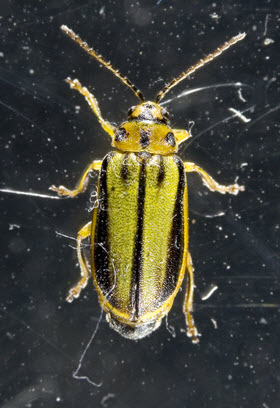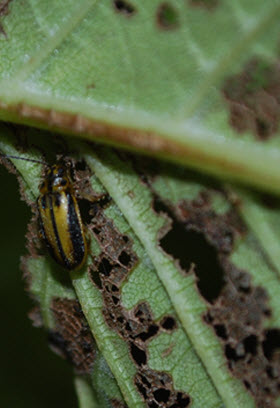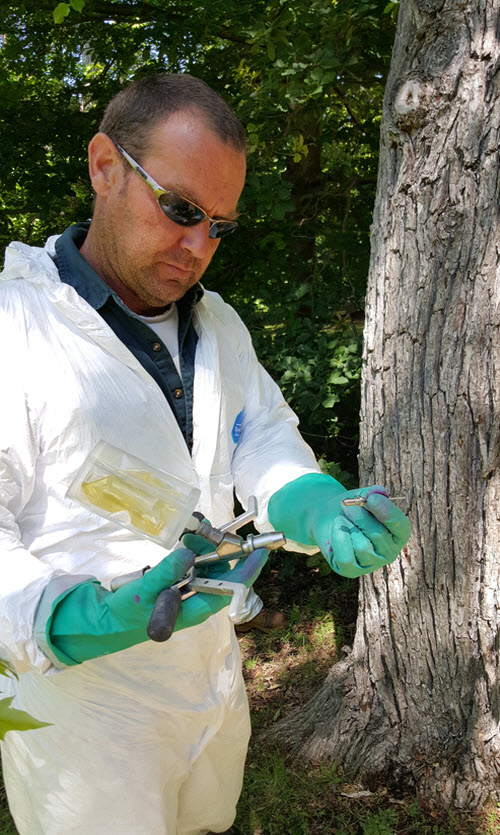The beginnings
The Elm Leaf Beetle is a recently introduced pest in Tasmania with the first recorded sightings within the Launceston area in late 2002 and in Hobart in 2008. Since then the beetle has become relatively common on a number of Elm trees throughout Tasmania.
The pest
The pest adult beetle and larvae feeds on the new emerging shoots and young leaves of Elm trees and in some cases it has the potential to completely
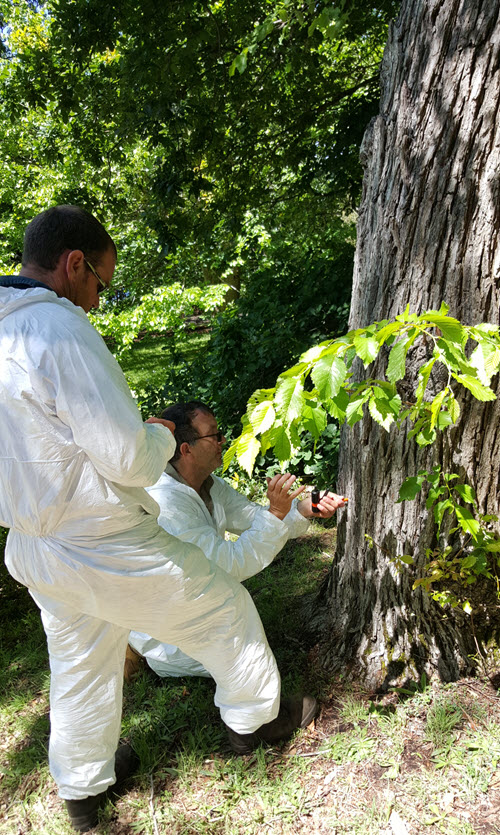
Botanical Gardens staff horticulturists Jeremy Patterson and Adam Lancaster preparing an Elm trunk for treatment
defoliate the tree, this is particularly the case with young plants. This in turn can significantly impact on the vigour of the plant and if it is a continual event it could result in secondary attacks by diseases and a gradual degradation of the plant itself.
The pest itself has three main forms that may be visible to the eye they include the small yellowish green to olive green adult beetles with black stripes that are up to 6mm in size; the very small creamy lemon coloured eggs arranged in rows, usually on the undersides of the leaves in spring; and the young almost black caterpillar like grubs or instars, that hatch from the eggs which eventually get to about 12mm in size in the late spring and early summer. The adult stage and the instars /grub stages can severely defoliate the trees they feed upon throughout the trees growing period. The adults often leaving their distinctive damage know as shot hole or skeletonisation which mostly consists of small millimetre size holes throughout the leaf surface.
When the young instars get to full size after feeding on the leaves, they start to migrate down the trunk of the tree to pupate in the lower crevices at the base of the trunk or in the soil underneath the tree.
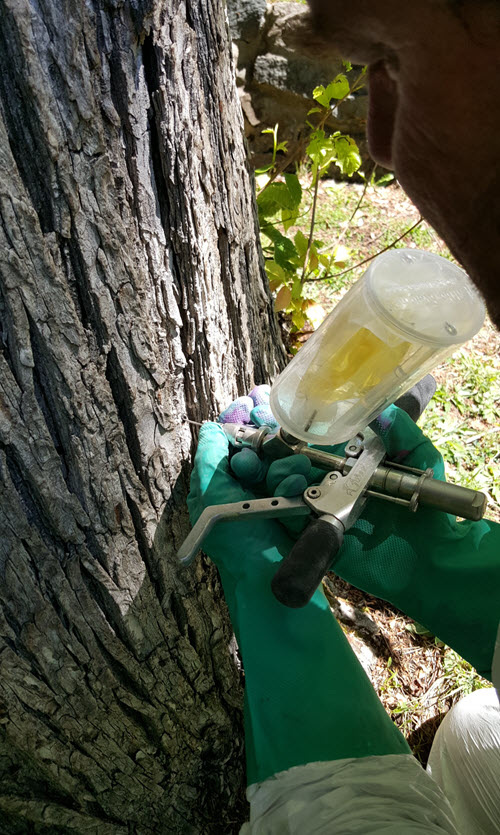
Treating the Elm trunk. The chemical rises up the transport tissue and into the leaves where it kills feeding pests
Management
The beetle can be managed in large parks and gardens through chemical means such as tree injection, although this treatment is usually applied by tree specialists trained in this method of application and therefore not always available to the home gardener. Another method which is also relatively environmentally friendly and simple for the home gardener is trunk banding, where the base of the tree a short distance up the trunk is wrapped in a 20cm band of sticky tape and then smeared with a sticky paint, (paint example). The grubs crawl onto the sticky surface and then get caught, they then promptly die and are picked off by birds. This method is effective but careful monitoring is required so that you can catch them a just the right time. This technique works best from December on-wards in Tasmania, but it is also very much dependent on the movement of the grubs on your particular tree in your area. You can even manage small infestations on young trees by simply hand removing the young grubs or adults and disposing of them in a bucket of soapy water.
Elm trees in the Royal Tasmanian Botanical Gardens are treated by tree injection by trained horticultural specialists every two years, or as required.
For further information: http://dpipwe.tas.gov.au/Documents/Elm_leaf_beetle_fact_sheet.pdf

